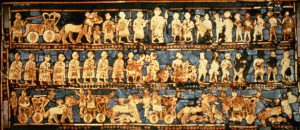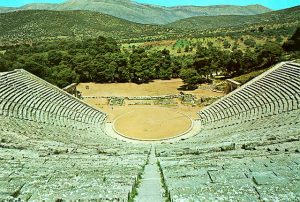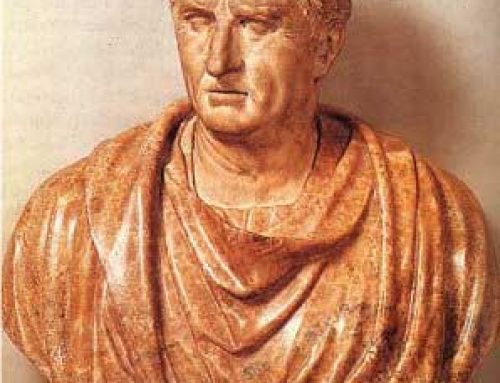
Ur was an early city-state. This is the Standard of Ur, from West Asia (2000 BC)
What is a city-state?
A city-state is like a very small country, with just one city in it. The Greeks called a city-state a polis. (You pronounce it “poh-liss”.) That’s where our word politics comes from.
Types of government
Ancient Greek government
All our ancient Greece articles
There are still some city-states in the world today. Monaco and Luxembourg are two modern examples. But in antiquity and the Middle Ages, city-states were very common. City-states could have different kinds of government. They could be democracies. Or they could have kings and queens and be monarchies. Or they could have a town council and be an oligarchy.
The first city-states
The first city-states were probably in West Asia. There were many city-states in West Asia all throughout the Bronze Age. Sometimes these states were unified under a leader like Sargon of Akkad, to make an empire. But sometimes they were independent. Uruk is one example of these Sumerian city-states.
Who were the Sumerians?
The Akkadian Empire
Yayoi Japan
Kings and queens ruled these city-states. They had councils of noblemen for advisors, as we see in the Epic of Gilgamesh. There were city-states in early Japan. Also, there may also have been city-states in India, and in Ecuador, Peru, Chile, and Brazil.
Valdivia Ecuador
Norte Chico Peru
Mapuche Chile

Cherokee council meeting
Native American city-states
In North America, many people lived in city-states as well. Cherokee people, for instance, lived in many different city-states until after the European invasion. Then they unified under one chief in the 1700s AD.
Cherokee history
Mississippian period

Greek theater at Epidauros (200 BC
Ancient Greece
Greece, in the Bronze Age, also formed many small city-states. Homer’s Iliad lists them: Mycenae, Sparta, Pylos, Athens, Corinth, Thebes, Ithaca, and so on. These city-states also had kings or queens.
Mycenae
Sparta
Athens
Corinth
Thebes
Oligarchies, democracies, and republics
At the beginning of the Iron Age, many different people made new city-states all around the Mediterranean Sea. Some examples are the Etruscans, the Romans, the Greeks, and the Phoenicians. Oligarchies or democracies ruled most of these city-states.
The Etruscans
Greek colonization
What is an oligarchy?
Medieval city-states
But by about 300 BC, most of the city-states had been swallowed up into big empires. Empires were stronger and more peaceful than living in city-states. It was not until the High Middle Ages, about 1000 AD, that city-states appeared again in northern Italy and Spain.
Florence
Genoa
Pisa
Venice
In the Middle Ages, city-states like Florence, Genoa, Pisa, and Venice were rich and powerful. They controlled Mediterranean trade with the Silk Road, Egypt, and India.





hey how ya doing
Hi Jeff! Thanks for stopping by! If you like this article, our Patreon is http://patreon/Quatr.us and we can always use a little love.
Hey daddy what doing??
if we lived in city states now what would our society be like now????
It’s always hard to answer a counterfactual – a question that asks about something that didn’t actually happen. But we can try to guess. I think the main difference would be that we’d have a lot more wars, and those wars would be much more of a problem for most people than they are today. If your country was just your city and the land around it, your borders would be very close to home. You’d always be fighting with the next city over about land, or water rights. You or your parents would have to go fight in those wars. And often the war would come right into your city and even into your house. Big countries mean that wars happen far away from most people’s houses, and are much less common.
hi
Thank you so much I guess Kings are a type of government! :)
Glad I could help.
hello
Hi Donald! How’s it quacking?
I thought City-States were run by a government not Kings. Were they ever run by a government?
Kings are a kind of government, right? But yes, city-states can have any kind of government. Sparta had two kings. Athens had first an oligarchy and then a democracy.
What group of people are usually the rulers of the city-states and why?
That sounds like a homework question? But it’s in the article.